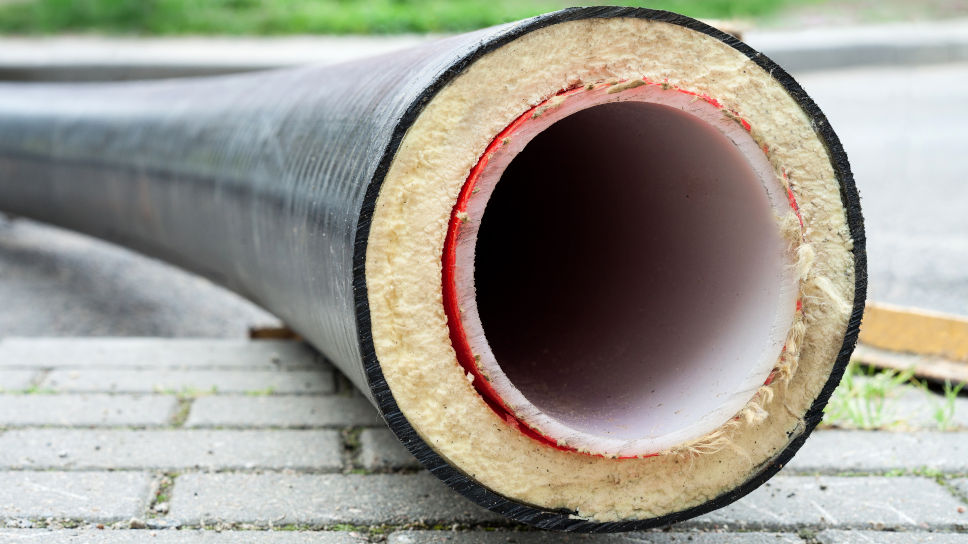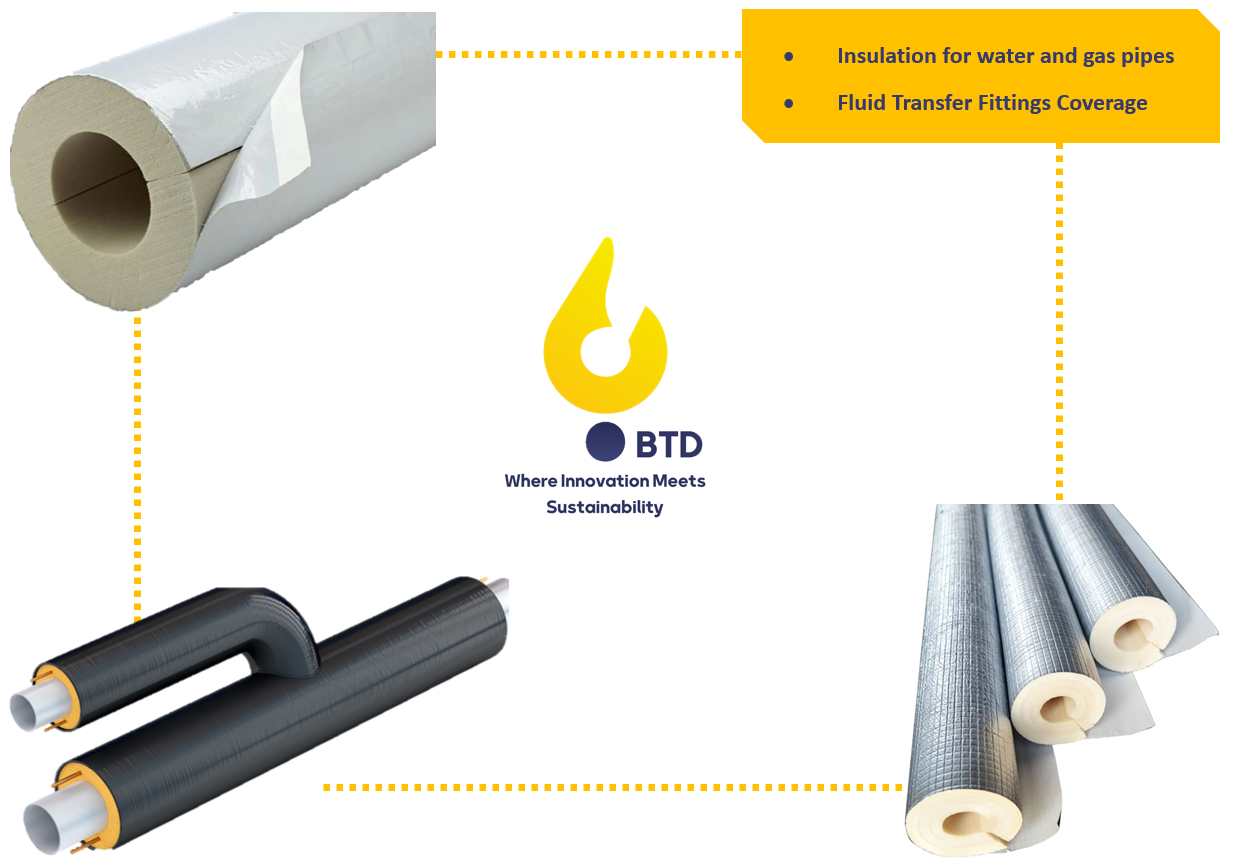Pipe insulation foam
Polyurethane injection pipe insulation foam is used in the water and gas industry to prevent thermal energy loss and enhance the resistance against freezing due to extreme temperature changes. The formulated polyols by Baspar Tose'e Davam Shimi Company are utilized in polyurethane pipe insulation injection foam and are produced and supplied in various flame-retardant systems B1, B2, and B3 (normal). This company has the capability to produce different grades of polyols based on modifications to technical parameters and flame-retardant features defined by customer requirements. Next, we will examine the technical parameters that influence the properties of the polyols used in polyurethane injection pipe insulation foam.

Variety of Grades
| Specification | Unit | BATOPOL | ||||
|---|---|---|---|---|---|---|
| D30 | D50 | D9000 | NGF1 | |||
| Polyol Properties | Type | Low Density | High Density | discontinuous filling | discontinuous filling | |
| Brookfield Viscosity | cps | 600±200 | 800±200 | 800±200 | 900±200 | |
| Cream time | sec | 20±5 | 30±5 | 40±2 | 35±5 | |
| Gel time | sec | 110±10 | 130±10 | 180±20 | 120±10 | |
| Tack Free Time | sec | 180±20 | 200±20 | 240±20 | 200±20 | |
| Free Rise Density | kg/m³ | 35±1 | 45±2 | 36±2 | 50±3 | |
| Core Density in Foam | Core Density in Foam | kg/m³ | 48-50 | 48-50 | 48-50 | 55-60 |
| Closed Cell Content | % | >90 | >90 | >90 | >90 | |
| Compressive Strength | kPa | >150 | >180 | >180 | >200 | |
| Thermal conductivity (k-factor) | W/mK | 0.024 | 0.024 | 0.023-0.024 | 0.026-0.028 | |
| Fire Properties | B2 | B2 | B2 | B2 | ||
Applications

Proper insulation of pipes is crucial in various industries, from residential heating systems to large-scale utility networks. Pipe insulation foam is one of the most effective solutions for minimizing heat loss, preventing condensation, and enhancing energy efficiency. By applying pipe thermal insulation, businesses and homeowners can significantly reduce energy consumption, improve system longevity, and lower maintenance costs. This article explores the types, benefits, and applications of foam for water and heating pipes, emphasizing how it contributes to energy conservation and system efficiency.
Understanding Pipe Insulation Foam
Pipe insulation foam is a specialized material designed to create a protective layer around pipes, preventing unwanted heat transfer and condensation. It is commonly used in HVAC systems, industrial piping, and residential plumbing. The primary purpose of pipe insulation for utility systems is to ensure that pipes maintain their optimal temperature, reducing energy waste and improving performance.
Types of Pipe Insulation Foam
Closed-Cell Foam Insulation:
-
Offers excellent thermal resistance
-
Prevents moisture absorption and condensation
-
Commonly used in foam for water and heating pipes
-
Open-Cell Foam Insulation:
-
More flexible and lightweight
-
Provides soundproofing benefits
-
Suitable for lower-temperature applications
-
Elastomeric Foam Insulation:
-
Highly resistant to moisture and microbial growth
-
Used in refrigeration and HVAC systems
-
Ensures efficient pipe insulation coating
-
Polyethylene Foam Insulation:
-
Affordable and easy to install
-
Ideal for home plumbing and HVAC ducts
-
Helps in reducing energy loss with pipe insulation
Benefits of Pipe Insulation Foam
Energy Efficiency: By using pipe thermal insulation, heat loss is minimized, reducing the overall energy demand of heating and cooling systems.
Condensation Prevention: Moisture buildup inside pipes can lead to corrosion and damage. Pipe insulation for utility systems effectively prevents condensation.
Cost Savings: Investing in foam for water and heating pipes helps in cutting down maintenance and energy expenses in the long run.
Safety and Comfort: Proper insulation reduces the risk of burns from hot surfaces and enhances indoor temperature stability.
Extended Equipment Lifespan: Insulated pipes experience less wear and tear, prolonging their operational life.
Applications of Pipe Insulation Foam
Residential Heating and Plumbing:
-
Foam for water and heating pipes is used to maintain the temperature of hot water and reduce pipe freezing risks.
Industrial and Commercial Systems:
-
Factories and office buildings use pipe insulation for utility systems to improve efficiency and comply with energy regulations.
HVAC and Refrigeration:
-
Pipe insulation coating ensures better cooling system performance and prevents condensation in refrigeration units.
Energy and Power Plants:
-
Industrial steam and hot water pipelines require pipe thermal insulation to prevent excessive energy loss.
Reducing Energy Loss with Pipe Insulation
A significant advantage of pipe insulation foam is its role in reducing energy loss with pipe insulation. By maintaining stable temperatures within piping systems, insulation prevents the unnecessary workload on heating and cooling units. This not only lowers operational costs but also supports sustainability efforts by reducing greenhouse gas emissions. Proper pipe insulation coating ensures an airtight barrier against thermal exchange, maximizing efficiency.
Conclusion
Incorporating pipe insulation foam in residential, commercial, and industrial settings provides undeniable benefits, including energy savings, system protection, and environmental sustainability. Whether used in pipe insulation for utility systems or as foam for water and heating pipes, it plays a critical role in modern infrastructure. By selecting the right insulation material and ensuring proper installation, businesses and homeowners can enhance their energy efficiency while protecting their piping systems for years to come.
You can purchase high-quality pipe insulation foam from btdsco, a trusted provider of thermal insulation solutions. Their products ensure durability and efficiency in reducing energy loss in utility systems.
